
Hardtail carbon frames are known for their durability, stiffness, and lightweight construction, making them an excellent choice for mountain biking enthusiasts. With so many options available in the market, finding the perfect hardtail carbon frame for your ride can be an overwhelming task. In this post, we will discuss three of the best hardtail carbon frames available in the market and help you choose the perfect one for your riding style. 1. Carbon hardtail bike frame SDY20: If you're looking for a lightweight hardtail carbon frame, the SDY20 is an excellent option. Weighing only 980g (S-15'') and 1050g (M-17''), it is one of the lightest frames available in its class. This frame is suitable for XC and trail riding due to its lightweight construction. However, it may not be suitable for more aggressive riding styles such as downhill or freeride. One of the best things about this frame is that it offers great value for money and provides riders with plenty of customization options thanks to its compatibility with most forks and tires. 2. Carbon 29er mountain bike frame SDY21: The SDY21 is an excellent option for riders who want a comfortable and durable ride. This frame is suitable for a seatpost with a diameter of 30.9mm, making it an ideal choice for riders who prioritize comfort. The frame is flexible, allowing you to swap between Quick Release and Thru Axle as per your preference. This frame can accommodate 135QR, 142TA, and 148boost, making it suitable for a wide range of riders. This frame is great for XC, trail, and all-mountain riding styles. 3. Carbon fiber 29er frame MFM200: If you're looking for a hardtail carbon frame that is strong yet lightweight, the MFM200 is an excellent option. This frame is made from high-quality carbon fiber, making it strong yet lightweight. Its carefully crafted geometry accommodates 29er*2.1" wheels, with its sleek design. The MFM200 offers clearance for tires up to 2.1″, effectively absorbing road bumps and ensuring a smoother and more comfortable riding experience. This frame is suitable for XC, trail, and all-mountain riding styles. Conclusion: Choosing the perfect hardtail carbon frame for your ride depends on your riding style, budget, and personal preferences. The SDY20, SDY21, and MFM200 are all excellent options and offer a range of features that can enhance your riding experience. Ultimately, the best way to find the perfect hardtail carbon frame is to try them all out and see which one feels the best for you. Remember to consider your riding style, budget, and personal preferences when selecting a hardtail carbon frame to ensure a smooth and enjoyable ride.
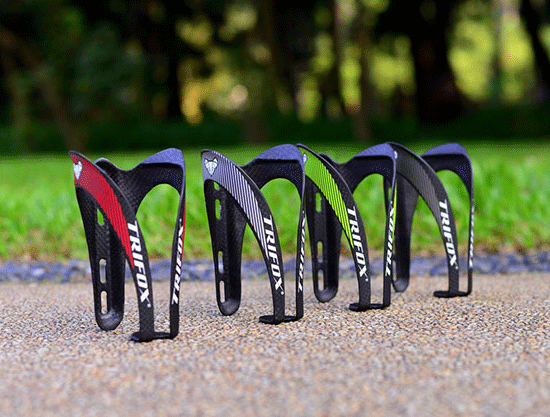
As a cycling enthusiast, you know how important it is to stay hydrated during your ride. However, carrying a water bottle can be inconvenient and even dangerous if it isn't securely attached to your bike. That's where the Trifox Carbon Bottle Cage comes in. It's a lightweight, sturdy, and versatile accessory that can help you keep your water bottle within easy reach and prevent it from bouncing around on rough terrain. 1. Lightweight and Durable Design One of the most significant advantages of the Trifox Carbon Bottle Cage is that it's incredibly lightweight. The thick version CBC100 weighs only 28g ± 2g, while the AERO thin version CBC200 weighs only 20g± 2g. It's made of carbon fiber material, which makes it not only super lightweight but also highly durable. You won't have to worry about it breaking or deforming even when you're cycling through rough terrain. 2. Suitable for Various Bikes The Trifox Carbon Bottle Cage is versatile in its design, making it suitable for a wide range of bicycles. Whether you have a mountain bike or a folding bike, the Trifox Carbon Bottle Cage will fit perfectly. Apart from this, it has a sturdy structure that can prevent damage or deformation during your ride. Plus, it's effortless to install, taking only a couple of minutes to mount to your bike. 3. Multiple Color Options Apart from a sturdy design, the Trifox Carbon Bottle Cage also comes in multiple color options. The AERO thin version CBC200 comes in red, silver, yellow, and gray. This feature allows you to match your water bottle cage with your bike or add a pop of color to it. 4. Prevent Water Bottle Slippage The Trifox Carbon Bottle Cage has excellent retention capability, ensuring your water bottle stays in place throughout your ride. There are multiple bottles that fit this cage, and the unique design ensures a tight and snug fit. This feature prevents your bottle from falling even when you're negotiating sharp turns or riding at breakneck speed. Conclusion: If you're looking for a perfect accessory for your bike that can make your ride more enjoyable, look no further than the Trifox Carbon Bottle Cage. Its lightweight, durable, versatile, and retention features make it a must-have item for all serious cyclists. You can choose from various color options and enjoy the added benefit of money-back guarantee. Don't wait any longer- invest in the Trifox Carbon Bottle Cage today and get ready for a ride like no other.
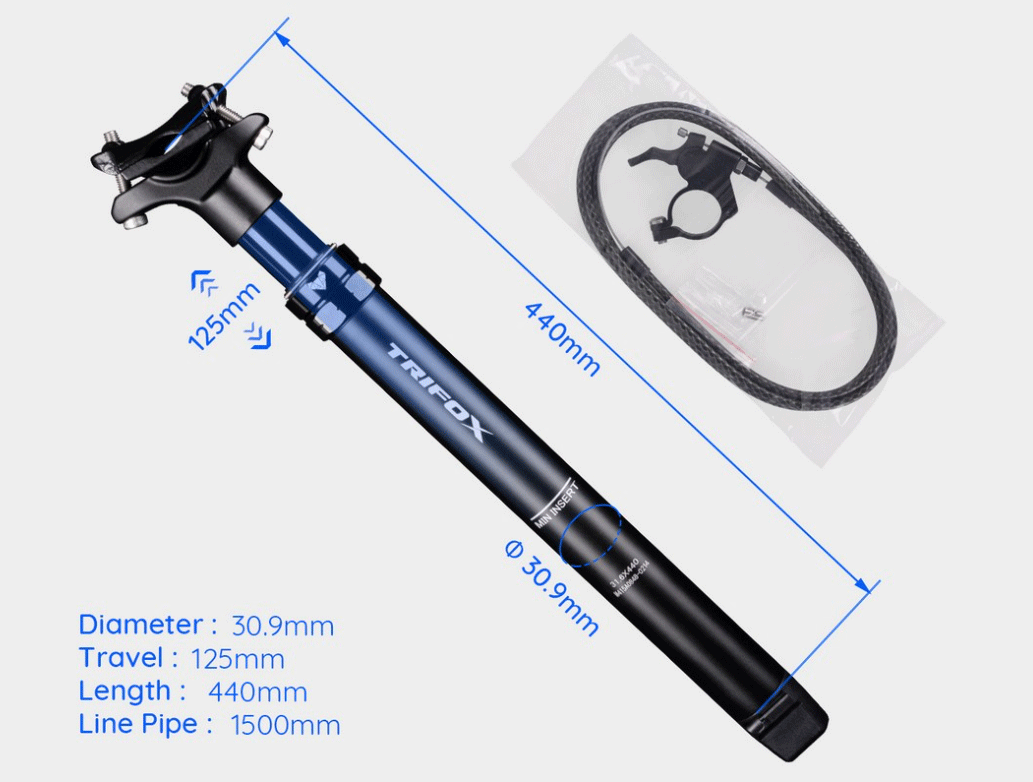
Biking is enjoyed by many individuals for various reasons. Some do it for exercise, while others do it for leisure and relaxation. Whatever your reason is, one thing's for sure - the smoother your ride, the better. This smooth experience can be achieved with the help of the right equipment such as the Trifox AIR Bike Dropper Seatpost AP309. In this blog post, we'll explore everything you need to know about this product, its features, benefits, and how it can help you achieve the perfect ride. The Trifox AIR Bike Dropper Seatpost AP309 is a dropper seatpost that is made of high-quality AL7075 material, making it sturdy and durable. It has a length of 440mm with a 125mm travel, and a Linelength of 500mm, which ensures maximum efficiency and optimal positioning. It has a pipe diameter of 30.9, making it suitable for most bike frames. One of the unique features of this Trifox product is its wiring option, which includes Upper Routing (APS309), Center Routing (APM309), and Bottom Routing (APD309). This allows you to choose the best option that suits your bike frame and wiring preferences. Moreover, it has a Stainless screw and a UD Matte finish that adds a touch of sophistication to your bike. It also comes in black color, which is a popular color choice for most bike enthusiasts. Another great benefit of the Trifox AIR Bike Dropper Seatpost AP309 is its weight. It only weighs 783g/831g/807g (depending on the wiring option), making it easy to carry and maneuver. This is perfect for individuals who like to take their bikes out on challenging trails. The Trifox AIR Bike Dropper Seatpost AP309 also has a dropper tube seatpost style, perfect for those who want to achieve the perfect ride. Prospective buyers of the Trifox AIR Bike Dropper Seatpost AP309 will also appreciate its easy installation process. The seatpost comes with clear installation instructions that make it easy for anyone, regardless of their experience level, to install it with ease. Finally, the most significant benefit you'll get with this Trifox product is its ability to make your biking experience smooth and enjoyable. The dropper tube seatpost style and 125mm travel ensure that you can adjust your seat height quickly and efficiently, providing a comfortable ride. You'll appreciate the improved maneuverability and stability, making it easier to navigate those challenging trails. In conclusion, the Trifox AIR Bike Dropper Seatpost AP309 is an excellent addition to any biker's equipment. It is durable, easy to install, lightweight, has multiple wiring options, and offers an excellent riding experience. You'll appreciate the improved maneuverability and stability, making it easier to navigate those challenging trails. With the Trifox AIR Bike Dropper Seatpost AP309, you can enjoy a smooth and comfortable ride every time.
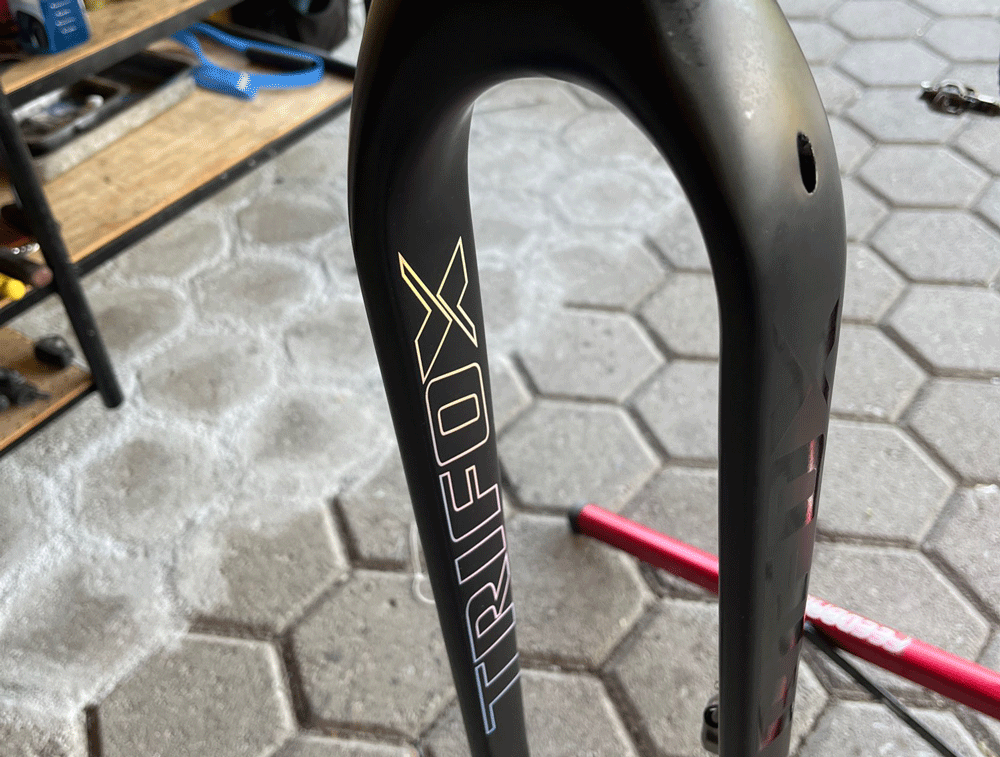
If you're serious about mountain biking, you should know that choosing the right bike fork is essential to your riding performance. A good quality fork enhances your riding experience, making it smoother and more efficient on any terrain. There are different types of bike forks available, and choosing one can be a daunting task. But worry not, in this blog post, we will guide you through the process of choosing the right fork for your riding style. 1. Consider the Riding Style The first thing you need to consider before purchasing a bike fork is your riding style. A rigid fork is excellent for urban and touring biking, but if you’re into mountain biking, a suspension fork may be the right option for you. Depending on the terrain, you may need a fork with a longer travel such as the Trifox 29er Carbon MTB Fork Rigid QMK100 for smooth rides. 2. The Material of the Fork The material of the fork plays a crucial role in the bike's performance. Carbon fiber is one of the most popular materials used for forks because of its lightweight and durability. The Trifox 29er Carbon MTB Fork Rigid QMK200, for instance, is made from the strongest carbon fiber, which offers incredible pressure resistance. It is perfect for riders who want a lightweight fork and maximum performance. 3. Suspension Type Most bike riders prefer a suspension fork that comes with different travel options. The Trifox 29er Carbon MTB Fork Rigid TMK100 is a great option because it offers a 3K carbon weave design that is durable and lightweight. It also features a tapered 1-1/8"-1-1/2" which gives you great control over your ride. A fork with a thru-axle is another excellent option that ensures better wheel alignment and maximum performance. 4. Brake Compatibility The type of brake you use is an essential factor to consider when choosing a bike fork. Each fork is designed to accommodate a specific brake setup, either disc brakes or V-brakes. The Trifox 29er Carbon BOOST MTB Fork Rigid TMK200 is an excellent option for riders who want to use disc brakes because of its compatibility with 160/180mm rotor brakes. 5. Consider the Weight of the Fork The weight of your bike affects your riding performance greatly, and your fork makes a considerable contribution to it. The Trifox 29er Carbon MTB Fork Rigid QMK200 is one of the lightest forks available, weighing only 550g. It is perfect for riders who are conscious about bike weight and don't want to compromise on performance. Choosing the right bike fork is essential to ensuring a smooth, comfortable, and performance-enhancing ride. Consider your riding style, the material of the fork, suspension type, brake compatibility, and the weight of the fork. Don't forget to purchase from a reputable dealer and spend time looking for a reliable brand such as Trifox. With the right fork, you'll have one of the best bike riding experiences on any terrain. Happy riding!
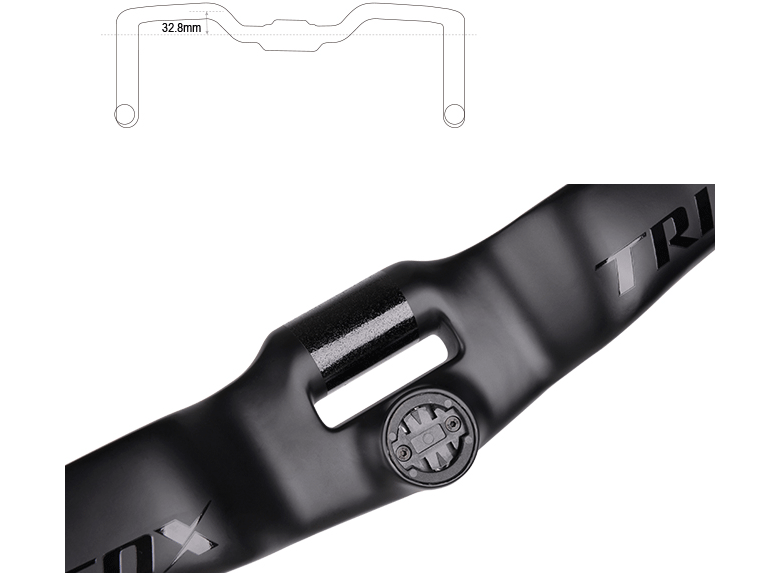
If you're looking to improve your biking speed and performance, you may want to consider investing in an aero bar. Aero bars, also known as tri bars or time trial bars, can help you achieve a more aerodynamic position on your bike, reducing wind resistance and allowing you to go faster with less effort. The Trifox 31.8 Drop aero Bar TC20UL is a handlebar made of carbon fiber and features internal cable routing, giving it a sleek, low-profile design. The unique shape of this aero drop bar includes a sink in the middle, which helps to change the riding posture and improve your long-distance riding experience. Additionally, the end of the handlebars lift up slightly, allowing you to ride with your forearms parallel to the ground, further reducing wind resistance. One of the best things about the Trifox aero bar is its versatility. It's perfect for riders who enjoy road, gravel, and cyclocross riding, as there are a variety of hand positions available with this compact, ergonomic design. With the Trifox 31.8 Drop aero Bar TC20UL, you can position your hands for optimal comfort and control, allowing you to focus on your performance without distraction. Not only is the Trifox aero bar functional, but it also looks great. The sleek carbon fiber finish and smooth contours of this aero drop bar add a touch of style to any bike. The AERO break wind design streamlines the shape even more, making it a visually striking addition to your ride. Plus, it comes with a stopwatch bracket, so you can keep track of your time and performance with ease. Another key feature of the Trifox aero bar is its ease of installation. It has a 31.8mm clamp diameter and doesn't require a stem, making it easy to add to your bike without any major modifications. Plus, the internal cable routing ensures that the cable setup is neat and tidy, reducing the potential for any tangled wires or snags. All in all, the Trifox 31.8 Drop aero Bar TC20UL is an exceptional aero drop bar that can help maximize your aerodynamics and improve your biking performance. Made of high-quality carbon fiber, it's both strong and lightweight, making it an excellent choice for a variety of riders. With its ergonomic design, versatility, and sleek appearance, it's a top contender on the market and definitely worth considering for anyone looking to take their biking performance to the next level.
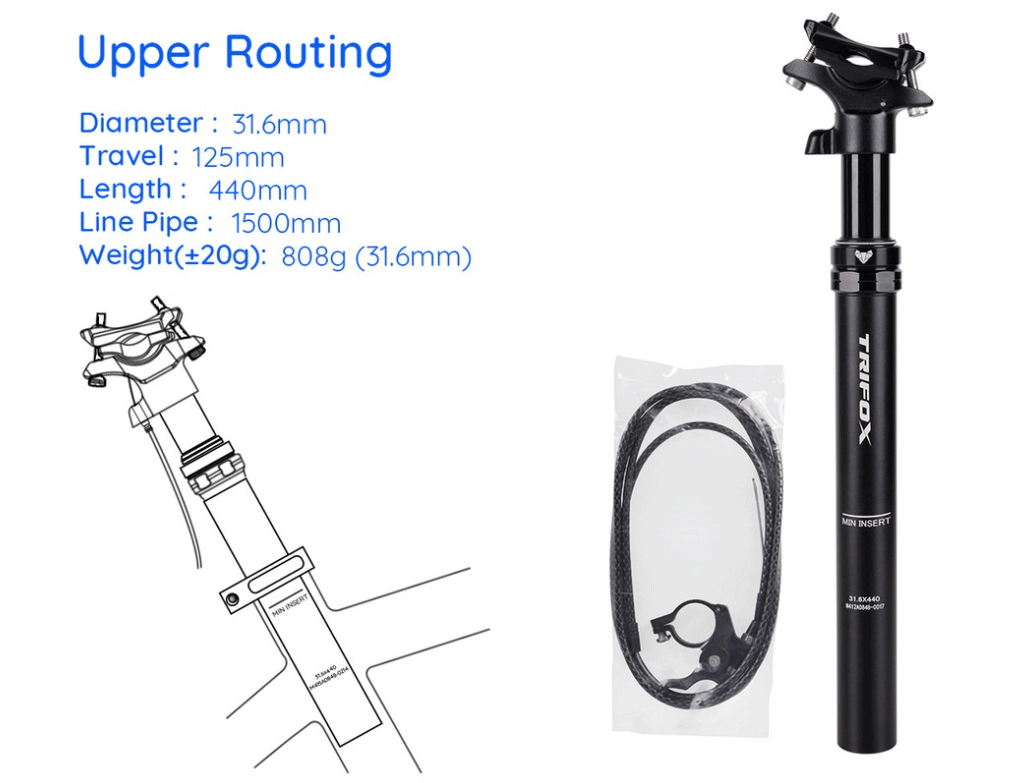
Mountain biking is a thrilling adventure sport that provides incredible experiences and challenges. However, as much as people love mountain biking, it can also be one of the most intimidating sports to participate in, especially for newbies. Mountain biking requires not only great control and skill but also the right equipment. In this blog post, we will be diving deep into why you should invest in a dropper post for mountain bike, and why the Trifox AIR Bike Dropper Seatpost AP316 is the perfect option for any avid mountain biker. 1. What is a dropper post and why do you need it? A dropper post, simply put, is a seat post that can be lowered or raised with the touch of a button or lever. This feature allows riders to adjust the seat’s height based on the terrain of the trail. Lowering the seat post gives riders more room and freedom for movement and control, especially on technical descents. Dropping your seat lower to the frame will transfer more weight to the back tire, giving you more traction and control. When the terrain flattens or inclines, a quick push of the button re-raises the saddle and is ready for pedaling. 2. Features of Trifox AIR Bike Dropper Seatpost AP316: The Trifox AIR Bike Dropper Seatpost AP316 is a premium-quality dropper that is lightweight, durable, has a smooth action, and is easy to install. The seat post is made of AL7075 aluminum alloy, making it durable and strong, yet lightweight. It comes in a length of 440mm with an O.D of 31.6mm, making it perfect for pipe diameter of 31.6. Trifox also offers three different wiring options i.e, Upper Routing, Center Routing, and Bottom Routing. The finish of the seatpost is an attractive UD matte, giving your bike a sleek look that will turn heads in the park or on the trail. 3. Benefits of Using Trifox AIR Bike Dropper Seatpost AP316: The Trifox AIR Bike Dropper Seatpost AP316 has many benefits and will be the perfect addition to your mountain bike gear setup. The first is that it has a 125mm travel, meaning that it is perfect for reducing the strain on your legs when you're going on a technical descent. This also ensures that you maintain your speed even in the steepest, most technical parts of the trail. The second is that the seat post is easy to install and ships with everything you need to get started. Lastly, it is made of high quality and durable materials, which makes it perfect for those riders who want to push their limits when it comes to mountain biking. 4. Making the decision to invest in a dropper post: Investing in a dropper post is a smart decision for those who are serious about mountain biking. A dropper post will allow you more control and freedom when it comes to navigating terrain. It prevents pain and strain in your lower back and thighs, thus allowing you to ride for longer without feeling fatigued. A dropper post is also a great addition for those who are looking to take part in longer rides and races. Conclusion: In conclusion, investing in a quality dropper post is a must for any serious mountain biker. The Trifox AIR Bike Dropper Seatpost AP316 is an excellent option, providing you with unmatched control and maneuverability on the trails. The seat post is an investment that will pay off immediately, reducing rider fatigue and increasing rider speed and control in technical sections. Get your hands on a Trifox AIR Bike Dropper Seatpost AP316 today and get ready for amazing experiences on the trails!
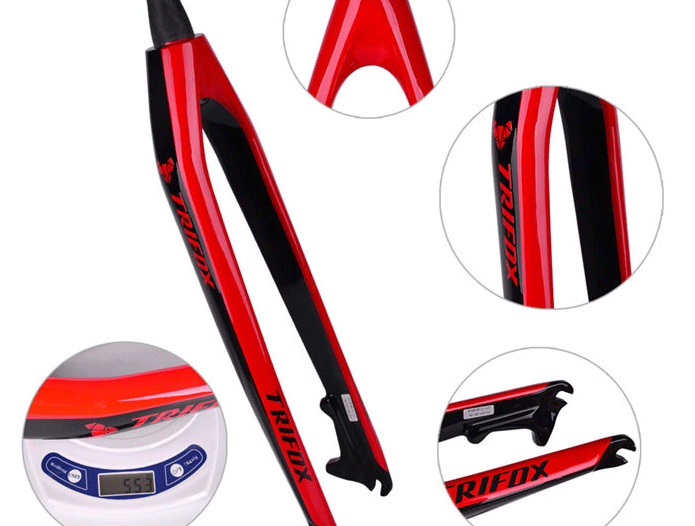
Are you looking for an upgrade to your bike that can take its performance to the next level? If yes, then Trifox has got your back with their 29er bicycle carbon fork QMK100. This fork is known for its excellent performance, lightweight construction, and remarkable durability. In this blog post, we will discuss why you must consider buying this fork for your MTB and how it can enhance your biking experience. 1. Improve the handling of your bike The Trifox 29er bicycle carbon fork QMK100 is designed to enhance the handling and control of your bike on the trails. This fork is very lightweight, which means it reduces the overall weight of your bike, making it easier to handle. Plus, the tapered style and quick release dropout make for easier steering. So if you've been experiencing difficulty in steering your bike or want a more comfortable ride, the Trifox 29er Carbon MTB Fork Rigid QMK100 is the perfect upgrade. 2. Enjoy a smoother ride If you frequently ride on rough terrain, you might experience a lot of shaking and vibration in the handlebar. Fortunately, this fork features a carbon construction that reduces the amount of vibration transmitted to the handlebar, reducing arm fatigue and providing you with a smooth ride. With this fork, you will hardly notice when you ride over bumps, rocks, or any other obstacles. 3. More responsive braking experience The Trifox 29er Carbon MTB Fork Rigid QMK100 comes with disc brake compatibility, which offers a more responsive braking experience. Disc brakes are more powerful and predictable, and they offer better modulation, so you can stop your bike without any difficulty. This feature is particularly beneficial when you are riding in muddy or wet conditions, or if you want to brake quickly when speed is a problem. 4. Long-lasting durability One of the most significant advantages of the Trifox 29er bicycle carbon fork QMK100 is its long-lasting durability. Made from high-quality T800 Import Carbon, this fork is resistant to wear, corrosion, and damage, ensuring you get a long-lasting return on your investment. Additionally, it employs a glossy finish that not only looks great but also increases durability by making the fork scratch-resistant. 5. Look stylish Lastly, we can’t forget to mention that the Trifox 29er Carbon MTB Fork Rigid QMK100 is available in two distinctive colors, red and black, that not only make your bike look good but also improve its visibility. You can choose the color that suits your style and match it with your other bike components. Apart from enhancing its appearance, these colors make your bike stand out, which means it is easier for cars and other bikers to see you on the road. Conclusion: Overall, the Trifox 29er Carbon MTB Fork Rigid QMK100 is an excellent upgrade for any MTB rider looking to enhance their biking experience. With better handling, smoother ride, disc brake compatibility, long-lasting durability, and stylish appearance, you won't regret investing in this fork. Whether you are a casual biker or a seasoned professional, the Trifox 29er Carbon MTB Fork Rigid QMK100 is an upgrade worth considering. So what are you waiting for? Get your hands on this fork and take your biking experience to infinity and beyond!

Are you looking to upgrade your bike's handlebars for better control and a sleeker look? The Drop Cycle Handlebars DHB500 may be just what you need. This 28.6mm Carbon Integrated Drop Bar is a one-piece carbon bar/stem combo that brings clean looks and light weight to any Road bike or Mountain Bike. 1. Improved Control: With the Drop Cycle Handlebars DHB500, you'll enjoy improved handling and control, thanks to its lightweight T800 Full Carbon construction. This not only offers a great road feel but also ensures better steering precision and responsiveness. The calibration marks and flat front surface make for easy lever installation, saving you time and hassle. 2. Wind-Resistance: The high-temperature joint-treated corners provide additional durability and longevity to the handlebars. The Drop Cycle Handlebars DHB500 also features an internally routed design that helps reduce wind resistance while riding. This means you'll experience less drag and greater speed, letting you easily tackle those challenging mountain climbs or race down the long stretches of road. 3. Ergonomic Design: The Carbon Drop Bar DHB500 boasts a sleek and ergonomic design that is both functional and stylish. It is available in various widths to ensure a perfect fit for your unique riding style and preferences. Furthermore, the integrated stem and bar combo add to the aesthetics of your bike, creating a seamless look that will turn heads and be the envy of your cycling group. 4. Durability: Drop Cycle Handlebars DHB500 are built strong and sturdy, thanks to the use of T800 Full Carbon construction. This means it can withstand the impact of any obstacle or accident while keeping your hands safe. The handlebars have also been tested for impact resistance, providing you with peace of mind knowing that your investment is a wise one that will last for the long haul. 5. Versatility: Whether you are a road biker or a Mountain Biker, the Drop Cycle Handlebars DHB500 is a versatile addition to your bike. With clamp diameter 28.6mm and bar width (center-to-center): 400mm/420/440mm, you can choose the size that fits the requirements of your bike and ensures optimal performance. In summary, the Drop Cycle Handlebars DHB500 have many benefits that make them a must-have upgrade for any cyclist. From increased control, wind resistance, and ergonomic design to their durability and versatility, they provide a superior riding experience that is unmatched by any other handlebars on the market. So, if you are looking for a game-changer that will take your cycling to the next level, look no further than Drop Cycle Handlebars DHB500.
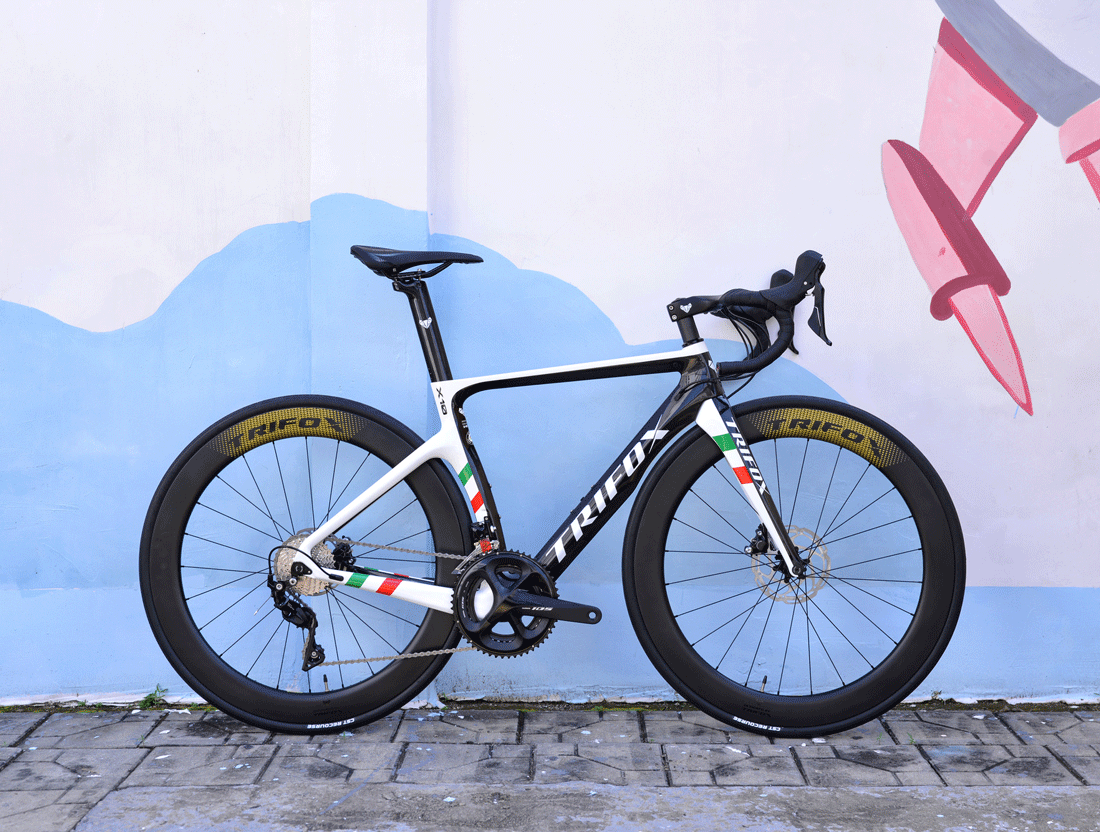
As we all know, carbon fiber is a popular material used in crafting bike frames as it is durable, lightweight, and offers excellent performance. However, these features come at a cost, and most carbon fiber frames are expensive, which can be discouraging, especially for those on a budget. Fortunately, you can still enjoy the benefits of carbon fiber frames without breaking the bank. In this blog post, we'll highlight the best budget carbon fiber road bike frames available in the market, specifically Trifoxbike's five road framesets. 1. Carbon Aerodynamic Bicycle Frame X8QR and X8TA For riders after a high-performance and stylish road bike frame, the Carbon Aerodynamic Bicycle Frame X8TA and X8QR from Trifoxbike is an excellent choice. These frames are crafted from lightweight and durable T800 carbon fiber, making them sturdy and aerodynamic. They come with V brake frames and are compatible with component sizes, ensuring optimal performance regardless of your preferred drivetrain setup. 2. Carbon Fiber Frame Road Bicycle X10 The X10 carbon fiber bicycle frame is Trifoxbike's new addition and highly compatible with both DI2 and mechanical systems. This compatibility ensures you experience optimal performance regardless of your preferred drivetrain setup. The X10 also comes with a seat post, front derailleur hook, hanger, and a headset, making it convenient and effortless to set up your dream bike. 3. Carbon Lightweight Bicycle Frameset X12 If you're after an aero road frameset that provides comfort and personalized fit, Trifoxbike's Carbon Lightweight Bicycle Frameset X12 is a great option. This frameset is available in various sizes to accommodate different rider heights and inseams, ensuring a perfect fit for maximum performance. 4. Super Light Carbon Cycle Frame X16 For those looking for the lightest road bike frames, the X16TA and X16QR from Trifoxbike come highly recommended. The X16TA has a Front: 100mm*12mm and Rear: 142mm*12mm compatibility with component sizes, while the X16QR has a Front: φ9x100 mm and Rear: φ10x130 mm. Both frames are crafted from super light carbon fiber and come with a seat post and headset, making them perfect for those who require optimal performance at a reduced weight. 5. Carbon Road Bike Frame X18 Lastly, Trifoxbike's Carbon Road Bike Frame X18 is perfect for cycling enthusiasts and professional riders. This frameset allows compatibility with component sizes, including the Full Internal Cable Routing Bike Frameset X18, which accommodates up to 700c wheels, with tire widths ranging from 28mm. The braking system is a Disc Brake (clipper holder: Flat Mount), Thru Axle Dropout, ensuring maximum safety while on the road. Conclusion: Finding a budget-friendly carbon fiber road bike frame can be challenging. Still, Trifoxbike's five road framesets are a testament that you don't have to break the bank to enjoy the benefits of carbon fiber frames. They are all crafted from high-performance and durable materials, ensuring optimal performance for every rider. Take your cycling experience to the next level with Trifoxbike's affordable excellence.

















